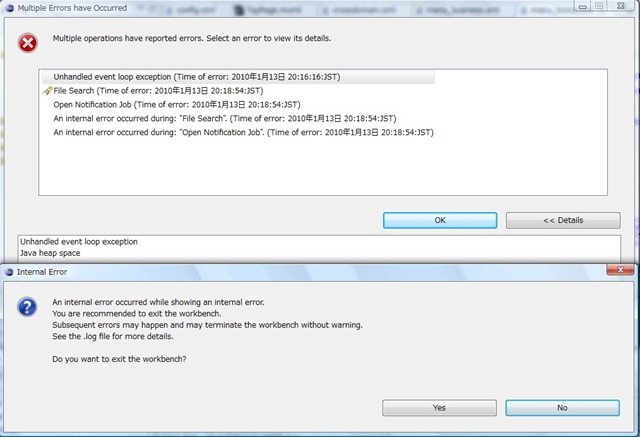Archive for the ‘Programming’ Category
SQL Injection License Plate Hopes to Foil Euro Traffic Cameras
Posted: March 23, 2010 in ProgrammingMicrosoft’s top developers prefer old-school coding methods
Posted: November 30, 2009 in ProgrammingManaged code runs inside a virtual machine. That makes it easier and faster to write, and more secure. Managed code also lets developers "perform above their level of competence."
"Managed code is like antilock brakes. You used to have to be a good driver on ice or you would die. Now you don’t have to pump your brakes anymore."
OOP, aka Object-Oriented Programming, is a modern(?) programming paradigm that uses "objects" to design & make computer programs. Oh, yes, you may blame me for the incorrect or incomplete definition of OOP, or any statements on this page. In that case, I think you really need to start your own blog (^-^)
OK, back to the topic. Remember I said "modern(?)"? Question mark, because it’s born in 1960s. Modern, because many modern programming languages/scripting adopting it. New PHP is also adopting OOP.
Well, I’m using PHP now in my current project. My impression is, PHP has sooooo many functions built-in functions to save you from mostly anything you need to accomplish your tasks. Good.
Now it’s already OOP-ed since PHP 4. Good. But, I found that it’s not 100% full OOP.
I miss coding in ASP.NET using C#. Some features I miss from C# are simply not available in PHP. While coding in PHP, I feel that as if I’m going back to the past with time machine. Why on earth in this modern area I still have to code with this obsolete way, obsolete debugging technic…. I can have the same work done in shorter time using ASP.NET.
What? You are saying "Don’t spoil yourself"? OK. I agree that if you spoil yourself, you will become a toy programmer. Let me make the point. I have tried code in Assembly language, I have ever created function in assembly that can be called from C. I have ever tried to create custom font (Japanese Hiragana, at that time) using assembly in DOS. I bet only a few of you have ever tried to run Borland C++ 3.x in Japanese Windows 9x/XP. You will get blank screen in Japanese DOS, because the screen mode is already in graphic mode. I need to apply my assembly language knowledge before I can run it in Japanese DOS. I have ever tried to code in QBASIC, PASCAL, C/C++, Java, Delphi, VB, VB.NET, JSharp and of course C#. Get the point? I know how to code from the most time-consuming one. So, it just like: I know how to ride bicycle, but I want to drive my car.
Another one, I still can’t find editor better than Visual Studio .NET for editing text. For selecting one word, you can select it by Ctrl+Arrow, Ctrl+Shift+Arrow. But I have faster way, just Ctrl+W. For copying 1 line, no need for extra energy to press HOME, Shift+END. I just press Ctrl+C without selecting anything, and I get the whole 1 line in the clipboard. Pressing Ctrl+V will insert that line DIRECTLY at any line without the need to press ENTER to give it a space before pasting it (if you use HOME, Shift+END for copying). And I sometimes face like this:
I need to remove some part of the text, like shown above. In this example, it’s just a few lines. In my experiences, I need to remove tens of lines. I can remove it within 2 seconds on a page without scrollbar. Now, ask yourself, how fast you can do it with your favorite editor? Well, I know this feature from Microsoft Word. I have been using this feature on Microsoft Word since I was senior high school. Another favorite shortcut, Ctrl+U and Ctrl+Shift+U, to convert text to make it lowercase and uppercase, respectively. Oh, macros also play a big role in my editing works. And sometimes I need to use regular expression to find and replace all occurrences. Well, many editors already support this, right?
Oh, ASP.NET-like PHP framework is P4A – PHP For Applications (http://p4a.crealabsfoundation.org/), and ASP.NET-like JSP is JSF (JavaServer Faces). But still, not 100% as OOP as ASP.NET.
"In these tests the .NET implementation proved significantly more reliable in handling service interruptions than did the two J2EE implementations. The WSAD implementation handled the controlled shotdown as well as the .NET implementation, and better than the RRD (which crashed when the downed server was restarted). In hte catastrophic failover test, however, only the .NET implementation recovered while both J2EE implementations failed to do so."
http://msdn.microsoft.com/vstudio/java/compare/ibmwebsphere/default.aspx
